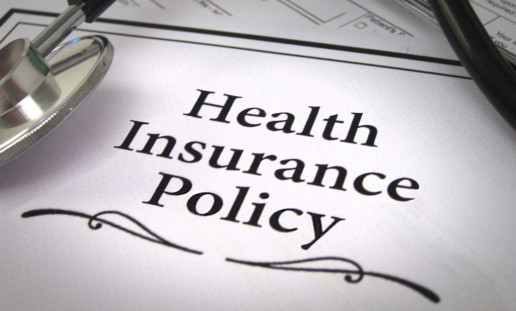Millennials, Gen X Struggle With the Same Financial Wellness Issues
Millennials and Generation X have a lot more in common than they think. Check out this great article by Amanda Eisenberg from Employee Benefit News and find out about the major financial issues facing both Millennials and Generation X.
From student loans and credit card debt to creating an emergency fund and saving for retirement, older millennials are beginning to face similar financial well-being problems as Gen Xers.
Financial stress among millennials decreased to 57% from 64% last year, which is more in line with the percentage of Gen X employees who are stressed about their finances (59%), according to PwC’s “Employee Financial Wellness Survey”.
“As much as millennials want to be different, life takes over,” says Kent Allison, national leader of PwC’s Employee Financial Wellness Practice. “You start running down the same path. Some things are somewhat unavoidable.”
Half of Gen X respondents find it difficult to meet their household expenses on time each month, compared to 41% of millennial employees, according to PwC.
Seven in 10 millennials carry balances on their credit cards, with 45% using their credit cards for monthly expenses they could not afford otherwise; similarly, 63% of Gen X employees carry a credit card balance, especially among employees earning more than $100,000 a year, according to the survey.
“The ongoing concern year after year — but they don’t necessarily focus on it —is the ability to meet unexpected expenses,” Allison says. “It’s stale but there are reoccurring themes here that center around cash and debt management that people are struggling with.”
With monthly expenses mounting, employees from both generations are turning to their retirement funds to finance large costs, like a down payment on a home.
Nearly one in three employees said they have already withdrawn money from their retirement plans to pay for expenses other than retirement, while 44% said it’s they’ll likely do so in the future, according to PwC.
Employees living paycheck to paycheck are nearly five times more likely to be distracted by their finances at work and are twice as likely to be absent from work because of personal financial issues, according to PwC.
The numbers are alarming, especially because Americans are already lacking requisite retirement funds, says Allison.
“Two years ago, the fastest rising segment of the population in bankruptcy is retirees,” he says. “I suspect we’re going to have that strain and it may get greater as people start to retire and they haven’t saved enough.”
Employers committed to helping their employees refocus their work tasks and finances should first look to the wellness program, he says.
“Focus on changing behaviors,” says Allison. “The majority of [employers] use their retirement plan administrators. You’re not going to get there if you don’t take a holistic approach.”
Meanwhile, employees should also be directed to build up an emergency fund, utilize a company match for their 401(k) plans and then determine where their money is going to be best used, he says.
They can also be directed to the employee assistance program if the situation is dire.
“It’s intervention,” Allison says. “At that point, it’s too late.”
See the original article Here.
Source:
Eisenberg (2017 April 27). Millennials, gen x struggle with the same financial wellness issues [Web blog post]. Retrieved from address https://www.benefitnews.com/news/millennials-gen-x-struggle-with-the-same-financial-wellness-issues
Health Reform Expert: Here’s What HR Needs to Know About GOP Repeal Bill Passing
The House of Repersentives has just passed the American Health Care Act (AHCA), new legislation to begin the repeal process of the ACA. Check out this great article from HR Morning and take a look how this new legislation will affect HR by Jared Bilski.
Virtually every major news outlet is covering the passage of the American Health Care Act (AHCA) by the House. But amidst all the coverage, it’s tough to find an answer to a question that’s near and dear to HR: What does this GOP victory mean for employers?
The AHCA bill, which passed in the House with 217 votes, is extremely close to the original version of the legislation that was introduced in March but pulled just before a vote could take place due to lack of support.
While the so-called “repeal-and-replace” bill would kill many of the ACA’s taxes (except the Cadillac Tax), much of the popular health-related provisions of Obamacare would remain intact.
Pre-existing conditions, essential benefits
However, the new bill does allow states to waive certain key requirements under the ACA. One of the major amendments centers on pre-existing conditions.
Under the ACA, health plans can’t base premium rates on health status factors, or pre-existing conditions; premiums had to be based on coverage tier, community rating, age (as long as the rates don’t vary by more than 3 to 1) and tobacco use. In other words, plans can’t charge participants with pre-existing conditions more than “healthy” individuals are charged.
Under the AHCA, individual states can apply for waivers to be exempt from this ACA provision and base premiums on health status factors.
Bottom line: Under this version of the AHCA, insurers would still be required to cover individuals with pre-existing conditions — but they’d be allowed to charge astronomical amounts for coverage.
To compensate for the individuals with prior health conditions who may not be able to afford insurance, applying states would have to establish high-risk pools that are federally funded. Critics argue these pools won’t be able to offer nearly as much coverage for individuals as the ACA did.
Under the AHCA, states could also apply for a waiver to receive an exemption — dubbed the “MacArthur amendment” — to ACA requirement on essential health benefits and create their own definition of these benefits.
Implications for HR
So what does all this mean for HR pros? HR Morning spoke to healthcare reform implementation and employee benefits attorney Garrett Fenton of Miller & Chevalier and asked him what’s next for the AHCA as well as what employers should do in response. Here’s a sampling of the Q&A:
HR Morning: What’s next for the AHCA?
Garrett Fenton: The Senate, which largely has stayed out of the ACA repeal and replacement process until now, will begin its process to develop, amend, and ultimately vote on a bill … many Republican Senators have publicly voiced concerns, and even opposition, to the version of the AHCA that passed the House.
One major bone of contention – even within the GOP – was that the House passed the bill without waiting for a forthcoming updated report from the Congressional Budget Office. That report will take into account the latest amendments to the AHCA, and provide estimates of the legislation’s cost to the federal government and impact on the number of uninsured individuals …
… assuming the Senate does not simply rubber stamp the House bill, but rather passes its own ACA repeal and replacement legislation, either the Senate’s bill will need to go back to the House for another vote, or the House and Senate will “conference,” reconcile the differences between their respective bills, and produce a compromise piece of legislation that both chambers will then vote on.
Ultimately the same bill will need to pass both the House and Senate before going to the President for his signature. In light of the House’s struggles to advance the AHCA, and the razor-thin margin by which it ultimately passed, it appears that we’re still in for a long road ahead.
HR Morning: What should employers be doing now?
Garrett Fenton: At this point, employers would be well-advised to stay the course on ACA compliance. The House’s passage of the AHCA is merely the first step in the legislative process, with the bill likely to undergo significant changes and an uncertain future in the Senate. The last few months have taught us nothing if not the impossibility of predicting precisely how and when the Republicans’ ACA repeal and replacement effort ultimately will unfold. To be sure, the AHCA would have a potentially significant impact on employer-sponsored coverage.
However, any employer efforts to implement large-scale changes in reliance on the AHCA certainly would be premature at this stage. The ACA remains the law of the land for the time being, and there’s still a long way to go toward even a partial repeal and replacement. Employers certainly should stay on top of the legislative developments, and in the meantime, be on the lookout for possible changes to the current guidance at the regulatory level.
HR Morning: Specifically, how should employers proceed with their ACA compliance obligations in light of the House passage of the AHCA?Garrett Fenton: Again, employers should stay the course for the time being, and not assume that the AHCA’s provisions impacting employer-sponsored plans ultimately will be enacted. The ACA remains the law of the land for now. However, a number of ACA-related changes are likely to be made at the regulatory and “sub-regulatory” level – regardless of the legislative repeal and replacement efforts – thereby underscoring the importance of staying on top of the ever-changing guidance and landscape under the Trump administration.
Fenton also touched on how the “MacArthur amendment” and the direct impact it could have on employers by stating it:
“… could impact large group and self-funded employer plans, which separately are prohibited from imposing annual and lifetime dollar limits on those same essential health benefits. So in theory, for example, a large group or self-funded employer plan might be able to use a “waiver” state’s definition of essential health benefits – which could be significantly more limited than the current federal definition, and exclude items like maternity, mental health, or substance abuse coverage – for purposes of the annual and lifetime limit rules. Employers thus effectively could be permitted to begin imposing dollar caps on certain benefits that currently would be prohibited under the ACA.”
See the original article Here.
Source:
Bilski J. (2017 May 5). Health reform expert: here's what HR needs to know about GOP repeal bill passing [Web blog post]. Retrieved from address https://www.hrmorning.com/health-reform-expert-heres-what-hr-needs-to-know-about-gop-repeal-bill-passing/
Healthcare Services: Employees Want to Find Less Costly Care, but Need HR’s Help
Have your employees been looking for new ways to reduce their healthcare cost? Check out this article from HR Morning on how HR can be a great tool for helping your employees find the best healthcare for their budget by Jared Bilski.
HR pros have been urging employees to ask questions and shop around for less-costly, high quality health care for years now — and it looks like many employees are finally heeding the call.
That’s the good news regarding healthcare cost transparency.
Step in the right direction
Specifically, 50% of individuals have tried to find out how their health care would cost before getting care, according to a recent report by the Public Agenda and the Robert Wood Johnson Foundation.
A little more than half (53%) of the individuals who compared the prices of common healthcare services did, in fact, save money.
The report also broke down the various places employees turned to for price info before getting medical care and found:
- 55% went to a friend, relative or colleague
- 48% went to their insurance company (by phone or online)
- 46% went to their doctor
- 45% asked a receptionist or other doctor’s office staffer
- 31% went to the hospital billing department
- 29% asked a nurse
- 20% relied on the Internet (other than their insurance company’s website), and
- 17% used a mobile phone app.
Another encouraging finding from the report: Employees don’t think saving money on healthcare services means receiving lower quality care. In fact, 70% of individuals said higher prices aren’t a sign of better quality healthcare.
The bad news
But the report wasn’t all good news.
For one thing, many employees are painfully unaware of the disparity in pricing for similar healthcare services. In fact, fewer than 50% of Americans are aware that hospitals and doctor’s prices can vary.
There are also problems when employees do inquire or shop around for less costly health care.
Sixty three percent of Americans say there isn’t enough information about how much medical services cost.
And when employees do at least inquire about cost before seeking treatment, most don’t think the next and most critical step: comparing multiple providers’ prices. Just 20% of the study respondents who asked about pricing went on to compare pricing.
Where HR comes in
Overall, the report is good news for employers, and firms should take the findings as evidence employees are finally ready to help find ways to lower the company’s overall health costs.
But it’s up to HR pros to help them succeed.
One way: Rolling out “how to” session on healthcare service comparison tools and finding providers — and this is especially important for small- and mid-sized companies. Employees at these firms are more likely to seek medical services based solely on location.
As Tibi Zohar, president and CEO of DoctorGlobe put it:
“The reality for most small to mid-size companies is that their health plan members tend to continue to seek health care at the nearest hospital or the one recommended by their doctors or friends.”
Another effective tactic: Adding incentives when employees use cost transparency tools in the form of premium discounts, contributions to HSAs or FSAs or even old-fashioned gift cards.
Remember, the transparency tools are those that employees can relate to personally and show exactly how much they will pay out-of-pocket for medical services.
See the original article Here.
Source:
Bilski J. (2017 April 21). Healthcare services: employees want to find less costly care, but need HR's help [Web blog post]. Retrieved from address https://www.hrmorning.com/healthcare-services-employees-want-to-find-less-costly-care-but-need-hrs-help/
Why Technology is Key to Financial Wellness Success
Are you trying to help your employees become successful and financial stable? Here is a great article from Employee Benefits News on how employers are figuring out that technology is key to helping their employees achieve success in their financial well-being by Kathryn Mayer.
Financial literacy is an increasingly desirable benefit for employees. But many employers don’t offer budgeting assistance, and a majority of workers are reluctant to let their company get involved in their financial business.
Dean Harris realized that in order to make financial wellness appealing to both employers and employees, he had to design technology that delivered flexible, multi-layered and comprehensive financial education in a way that’s enjoyable for the user — and ensures privacy. The chief technology officer of iGrad — a technology-driven financial wellness education company — created and maintains the iGrad and Enrich platforms, which deliver choices to make financial wellness the backbone of any benefit program. The product aims to offer financial wellness benefits with minimal cost and time to the employer.
“Financial literacy empowers workers to take control of something they feel is out of their control,” says Harris, a 2017 recipient of an EBN Benefits Technology Innovator Award. “By offering more information and knowledge, they are better equipped to make the right financial choices that promise to have far-reaching positive effects.”
By applying data analysis on the behavior of the user both within the platform and with regard to his approach to money, the platforms offer responsive content and recommendations. As the user’s skills and knowledge increase, the algorithm adjusts accordingly to provide newer and more relevant content leading to increased engagement and learning possibilities.
Technology is vital in achieving financial goals, Harris says, in part because it provides employees the privacy they desire.
“Financial literacy is a delicate subject. Most people are not comfortable discussing their finances —especially not with their employer,” Harris explains. “The online financial literacy platform offers the personalized and self-guided learning that will help them without exposing their personal financial information to their employer.”
Furthermore, topics addressed through the platform provide “interest, engagement and learning” for employees, Harris says. And employers “gain the benefit of a newly focused and re-energized workforce without having to drill down into areas that are too personal.”
“Ultimately, technology has made it possible for everyone to gain access to the help they need while maintaining privacy and discretion,” Harris says.
See the original article Here.
Source:
Mayer K. (2017 May 9). Why technology is key to financial wellness success [Web blog post]. Retrieved from address https://www.benefitnews.com/news/why-technology-is-key-to-financial-wellness-success
Employees Want Money More than Perks
Have you been trying to leverage your employee benefits as a way to attract and retain talent? Take a look at this great article from Benefits Pro about how employees still value money over the perks of employee benefits Marlene Y. Satter.
There’s plenty of talk these days about all sorts of employee benefits that might help to attract and retain top talent — but when push comes to shove, it’s the dollar sign that has the most influence.
That’s according to a Paychex.com survey, which finds that in the employment conversation, money still talks the loudest. It’s not that people don’t want or like other benefits, such as health insurance, vacations and 401(k)s, but what they really want, what they really, really want is cold hard cash in the form of bonuses and raises. Regular bonuses, they say, are the most important job incentive.
However, asked about the benefits they do receive, survey respondents list a range of benefits, including health care, dental insurance, 401(k)s, casual dress days and free snacks, but bonuses only come in at eighth place. Least important to them of all are “nomadic days” — days on which they can work away from the office at the location of their choice.
Asked their salaries and which benefits they’d gladly give up in exchange for more money, there are quite a few — with low-cost benefits the most disposable. Millennials, perhaps unsurprisingly, make the least money at less than $47,000 a year, while boomers come in second (despite their longevity on the job) at just over $49,000 annually; GenXers are the best paid, at an average of more than $53,000.
And they all know the value of a buck. The top five most expendable benefits named are free coffee or snacks; casual dress days; company events or outings; discounts on company products; and discounts on other products. In fact, such “benefits” may actually backfire if companies think offering them instead of merit-based compensation or bonuses to induce greater productivity.
There’s certainly a disconnect between what employees say they value most and what employers believe are the most valuable options, with employees saying the most important to them are monetary bonuses, additional paid vacation time, and health and dental insurance.
Bosses, on the other hand, think employee morale benefits more from paid vacations, bonuses and finally paid maternity leave and vision and dental insurance.
To show how out of touch employers can be, employers rate health care just above lunch breaks in terms of morale-boosting importance, despite its value to employees.
Considering that low-wage jobs are associated with higher rates of employee turnover, the study points out that providing employees with a salary increase could cut the costs associated with recruitment and training.
Of course, smaller companies tend to offer fewer, and less expansive, benefits than larger companies, with employers of fewer than 100 more likely to offer employees casual dress days or free snacks than they are to provide them with the considerably more important benefit of health insurance. But on the flip side, smaller companies are also more likely to offer bonuses than are larger companies, and indeed employees rank those bonuses above health care, dental insurance, and 401(k) plans in importance.
And the benefits on offer could depend on the age of the boss, with millennials more willing to offer employees commission and sales bonuses, paid gym memberships and student loan reimbursement while Gen Xers hit on all cylinders in offering bonuses, paid maternity leave and on-site health and wellness services.
Boomers, alas, seem stuck in the dark ages when it comes to modern benefit offerings, reluctant to see the benefit of such perks as bonuses, nomadic days and paid maternity leave; in addition, they’re really resistant to such things as student loan reimbursement and paid professional development.
See the original article Here.
Source:
Satter M. (2017 April 28). Employees want money more than perks [Web blog post]. Retrieved from address https://www.benefitspro.com/2017/04/28/employees-want-money-more-than-perks?ref=hp-news&page_all=1
Starting Early is Key to Helping Younger Workers Achieve Financial Success
Starting early is the best way to ensure dreams for life after work are realized, but when TIAA analyzed how Gen Y is saving for retirement, it found 32 percent are not saving any of their annual income for the future.
Knowing the importance of working with young people early in their careers to educate them about the merits of saving for a secure financial future, here are some approaches tailored to Gen Y participants:
- Encourage enrollment, matching and regular small increases – Enrolling in an employer-sponsored retirement plan is a critical first step for Gen Y participants. Contributing even just a small amount can make a big difference, especially since younger workers benefit most from the power of compounding, which allows earnings on savings to be reinvested and generate their own earnings.
Encouraging enrollment also helps younger workers get into the habit of saving consistently, and benefit from any matching funds. Emphasize the benefits of employer matching contributions as they help increase the amount being saved now, which could make a big impact down the line. Lastly, encourage regular increases in saving, which can be fairly painless if timed to an annual raise or bonus.
- Help younger workers understand how much is enough – We believe the primary objective of a retirement plan is offering a secure and steady stream of income, so it’s important to help this generation create a plan for the retirement they imagine. Two key elements are as follows:
- Are they saving enough? TIAA’s 2016 Lifetime Income Survey revealed 41 percent of people who are not yet retired are saving 10 percent or less of their income, even though experts recommend people save between 10 to 15 percent.
- Will they be able to cover their expenses for as long as they live? Young professionals should consider the lifetime income options available in their retirement plan, including annuities, which can provide them with an income floor to cover their essential expenses throughout their lives.
Despite the important role these vehicles can play in a retirement savings strategy, 20 percent of Gen Y respondents are unfamiliar with annuities and their benefits.
- Provide access to financial advice – Providing access to financial advice can help younger plan participants establish their retirement goals and identify the right investments. By setting retirement goals early, and learning about the appropriate investments, Gen Y participants can position themselves for success later on.
The good news is TIAA survey data revealed Gen Y sees the value financial advice can provide, with 80 percent believing in the importance of receiving financial advice before the age of 35.
- Understand the needs of a tech-savvy and digitally connected generation – It’s important to meet this generation where they are—on the phone, in person or online. We’ve learned that this generation expects easy digital access to their financial picture, and we offer smartphone, tablet and smartwatch apps in response.
- Engage Gen Y with digital tools - Choose ones that educate in a style that does not preach and allows them to take action. One way to reach Gen Y on topics such as retirement, investing and savings is through gaming.
We’ve found that the highest repeat users of our Financial IQ game are ages 24-34, and that Gen Y is significantly more engaged with the competition, with 50 percent more clicks.
- Engage Gen Y with digital tools - Choose ones that educate in a style that does not preach and allows them to take action. One way to reach Gen Y on topics such as retirement, investing and savings is through gaming.
Perhaps more than any other generation, Gen Y needs to understand the importance of saving for their goals for the future even if it’s several decades away. Employers play an integral role in kick-starting that process: first, by offering a well-designed retirement plan that empowers young people to take action; and second, by providing them with access to financial education and advice that encourages them to think thoughtfully about their financial goals—up to and through retirement.
See the original article Here.
Source:
McCabe C. (2017 April 14). Starting early is key to helping younger workers achieve financial success[Web blog post]. Retrieved from address https://www.benefitspro.com/2017/04/14/starting-early-is-key-to-helping-younger-workers-g?ref=hp-in-depth&page_all=1
Employers and the ACA – Its Status Quo for Now
With the passing of the AHCA, the ACA is now the norm for employers' healthcare. Find out what employers need to know about ACA and how it will affect them in the future in this interesting article from Think Hr by Laura Kerekes.
The Trump administration’s effort to repeal and replace the Affordable Care Act (ACA) through legislation failed last month when House Republicans were unable to push their proposal forward. The proposed bill, called the American Health Care Act, would have eliminated most of the ACA’s taxes and fees on health plans along with removing penalties on large employers that did not offer coverage to their full-time workers. It is unclear whether Congressional leaders will make another attempt to legislate major changes in the ACA this year. Meanwhile, federal agencies under President Trump’s direction may begin to take steps to revise regulations that do not require changes in law.
The situation certainly has caused some confusion among employers, so it is important to note that, as of now, nothing has changed. The ACA’s existing rules for group health plans, required notices, and employer reporting duties remain in effect. Applicable large employers (ALEs), generally entities that employed an average of 50 or more full-time-equivalent employees in the prior year, are still subject to the ACA’s employer mandate or so-called “play or pay” rules.
As a reminder, here is a brief summary of the key ACA provisions that require action by employers:
Notices:
- Employer Exchange Notice: Provide to all employees within 14 days of hire.
- Summary of Benefits and Coverage (SBC): For group medical plan, provide SBC to eligible employees at enrollment and upon request.
Health Plan Fees:
- Patient-Centered Outcomes Research Institute (PCORI): For self-funded group health plans, pay small annual fee by July 31 based on prior year’s average participant count.
- Transitional Reinsurance Program (TRP): For self-funded plans that provided minimum value in 2016, annual fee was due by January 15, 2017 (or by January 15 and November 15, 2017 if paying in two installments).
Reporting:
- W-2 Reporting: Report total cost of each employee’s health coverage on Form W-2 (box 12). This is informational only and has no tax consequences. (Employers that filed fewer than 250 Form W-2s for prior year are exempt.)
- Forms 1094 and 1095: ALEs only: Report coverage offer information on all full-time employees. Self-funded employers only (regardless of size): Report enrollment information on all covered persons.
Employer Mandate (“Play or Pay”): ALEs only. To avoid the risk of penalties, determine whether each employee meets the ACA definition of full-time employee and, if so, offer affordable minimum value coverage on a timely basis.
In summary, employers are advised to continue to comply with all ACA requirements based on the current rules.
On a related note, the ACA imposes several requirements on group health plans, whether provided through insurance or self-funded by the employer. Insured plans also are subject to the insurance laws of the state in which the policy is issued. In many cases, provisions matching the ACA are now embedded in state insurance laws. So future changes in the ACA, if any, may not apply to group medical policies automatically. Depending on the state and the type of change, additional legislation at the state level may be needed to enact the change.
See the original article Here.
Source:
Kerekes L. (2017 April 14). Employers and the ACA - it's status quo for now [Web blog post]. Retrieved from address https://www.thinkhr.com/blog/hr/employers-and-the-aca-its-status-quo-for-now/
From Boomers to Millennials, Here are Workers’ Top 6 Benefit Needs
Do you know which benefits your employees crave the most? Take a look at this great article from Hr Morning about the top employee benefits for each age group by Jared Bilski.
Depending on which demographic they fall into (Baby Boomer, Gen-X, Millennial, etc.), employees have vastly different benefit needs. So why do so many employers offer a one-sized-fits-all benefits package?
At the 2017 Mid-Sized Retirement & Healthcare Plan Management Conference in Phoenix, AZ, President and CEO of Cowden Associates Inc., Elliot N Dinkin, used the flexibility of the benefits offered through a private exchange as a reason for employers to give the exchange option a serious look.
Private exchanges — like public exchanges — are online marketplaces employers can use to provide coverage to their employees on everything from traditional benefits, like health insurance, to increasingly popular voluntary plans, like life, disability or cancer insurance.
Dinkin also used some compelling research to show just how greatly employees’ benefits needs varied from generation to generation.
Citing stats from a recent LIMRA study, which asked employees to rank their benefit needs, Dinkin laid out the top six responses of workers from 34 and under to employees 65-plus.
It’s worth noting that base pay was the top “need” for each and every employee demographic. The rest of the responses, however, were all over the map.
34 and under
The youngest workers in the study ranked their benefits needs in the following order:
- base pay
- career opportunities
- retirement plan
- low healthcare costs
- bonus/incentive, and
- flexible schedule.
35-49
The mid-life workers prioritized their benefit needs like this:
- base pay
- retirement plan
- low healthcare costs
- bonus/incentive
- paid time off (PTO), and
- flexible schedule.
50-64
Workers entering the latter stage of their careers ranked their benefit needs like this:
- base pay
- retirement plan
- low healthcare costs
- bonus/incentive
- paid time off (PTO), and
- type of work.
65-plus
Older workers tend to place a premium on the type of work they’re doing and the reputation of their employers. Their priorities are as follows:
- base pay
- retirement plan
- type of work
- bonus/incentive
- low healthcare costs
- working for a respectable organization.
See the original article Here.
Source:
Jared Bilski (2017 March 31). From boomers to millennials, here are workers' top 6 benefits needs. [Web blog post]. Retrieved from address https://www.hrmorning.com/from-boomers-to-millennials-here-are-workers-top-6-benefit-needs/
Workers Might See Employer Health Coverage Disappear Under New GOP AHCA
Do you receive your healthcare through an employer? Then take a look at this article from Benefits Pro about how the passing of the AHCA will affect employees who get their healthcare through an employer by Marlene Y. Satter.
It’s not just individuals without employer health coverage who could lose big under the newly revised version of the Republicans’ American Health Care Act.
People who get health coverage from their jobs could be left swinging in the wind, too—in fact, as many as half of all such employees could be affected.
That’s according to an Alternet report that says an amendment added to the bill currently being considered by the House of Representatives would allow insurers in states that get waivers from regulations put in place by the Affordable Care Act to deny coverage for 10 types of health services—including maternity care, prescription drugs, mental health treatment and hospitalization.
An MSNBC report points out that “because the Republican-led House is scrambling to pass a bill without scrutiny or serious consideration,” the last-minute amendment’s full effects aren’t even known, since “[t]his is precisely the sort of detail that would’ve come to light much sooner if Republicans were following the American legislative process. In fact, this may not even be the intended goal of the GOP policy.”
While the ACA prohibits employer-based plans from imposing annual limits on coverage and bare lifetime caps on 10 essential benefits, the Obama administration did loosen those restrictions back in 2011, saying that employers could instead choose to follow another state’s required benefits.
What the new Republican take on the AHCA does is push that further—a lot further—by allowing large employers to pick the benefit requirements for any state. That would let them limit coverage on such costly types of care as mental health and substance abuse services.
In a Wall Street Journal report, Andy Slavitt, former acting administrator of the Centers for Medicare and Medicaid Services under President Barack Obama, is quoted saying, “It’s huge. They’re creating a backdoor way to gut employer plans, too.”
The changes to employer-based plans would hit anyone not insured by Medicare or by small-business plans, because the bill includes cuts to Medicaid and changes to the individual market as well.
A report from the Brookings Institution points out that “One of the core functions of health insurance is to protect people against financial ruin and ensure that they get the care they need if they get seriously ill.” The ACA pushed insurance plans to meet that standard, it says, by requiring them to “limit enrollees’ annual out-of-pocket spending and [bar] plans from placing annual or lifetime limits on the total amount of care they would cover.”
However, while those protections against catastrophic costs “apply to almost all private insurance plans, including the plans held by the roughly 156 million people who get their coverage through an employer,” the Brookings report says, the amendment to the Republican bill “could jeopardize those protections—not just for people with individual market plans, but also for those with employer coverage.”
How? By modifying “the ‘essential health benefit’ standards that govern what types of services must be covered by individual and small group market insurance plans. The intent of the amendment is reportedly to eliminate the federal benefit standards that currently exist and instead allow each state to define its own list of essential health benefits.”
And then, with employers allowed to pick and choose which state’s regulations they’d like to follow, a loophole the size of the Capitol building would not only allow “states will set essential health benefit standards that are considerably laxer than those that are in place under the ACA,” says the report, but “large employers may have the option to pick which state’s essential health benefits requirements they wish to abide by for the purposes of these provisions.”
The result? “[T]his would likely have the effect of virtually eliminating the catastrophic protections with respect to large employers since employers could choose to pick whichever state set the laxest standards. The same outcome would be likely to occur for all private insurance policies,” the report continues, “if insurers were permitted to sell plans across state lines, as the Administration has suggested enacting through separate legislation.”
While the actual effect of the amendment is unclear, the Brookings report concludes, “there is strong reason to believe that, in practice, the definition of essential health benefits that applied to the catastrophic protections would be far weaker under the House proposal than under current law, seriously undermining these protections. These potential adverse effects on people with employer coverage, in addition to the potentially damaging effects of such changes on the individual health insurance market, are thus an important reason that policymakers should be wary of the House proposal with respect to essential health benefits.”
See the original article Here.
Source:
Satter M. (2017 May 4). Workers might see employer health coverage disappear under new GOP AHCA [Web blog post]. Retrieved from address https://www.benefitspro.com/2017/05/04/workers-might-see-employer-health-coverage-disappe?page_all=1
Advisers Seek Innovative Ways To Increase Retirement Savings
Are you struggling to save for your retirement? Check out this great article from Employee Benefits Adviser on what employee benefits advisers are doing to help their clients prepare for their retirement by Cort Olsen.
In a recent forum co-hosted by Retirement Clearinghouse, EBRI, Wiser and the Financial Services Roundtable, experts shared how automated retirement portability programs could be the key to increased participation in private-sector retirement plans.
Today, at least 64% of Americans say they do not have sufficient funds for retirement and less than half of private-sector workers participate in workplace retirement programs. Former U.S. Sen. Kent Conrad, a Democrat from North Dakota, says these statistics could improve through better access to workplace retirement savings plans.
“So many small businesses tell [Congress], ‘Look we’d like to offer a plan, but we just can’t afford it,’” Conrad says. “We take the liability off of their shoulders, we take the administrative difficulty off their shoulders and allow a third party to administer the plans, run the plans and have the financial responsibility for the plans, which makes a big difference for employers.”
With these improved access points to savings plans, Conrad says the opportunity arises to create new retirement security plans for smaller businesses with fewer than 500 employees, enabling multiple employers — even from different industries — to band together to offer their workers low cost, well-designed options.
“Once the [savings plan] has been put in place for a period of time, we then introduce a nationwide minimum coverage standard for businesses with more than 50 employees,” Conrad says. “Any mandate is controversial, but legally if you dramatically simplify (don’t require employer match) really all they have to do is payroll deduction, and then it becomes not unreasonable for employers with 50 or more workers to offer some kind of plan.”
How to achieve auto-portability
Once plans have been made available for employers of all sizes, Jack VanDerhei, research director for the Employee Benefit Research Institute, recommends three different scenarios for auto-portability of retirement plans between employers.
1) Full auto-portability. VanDerhei considers this to be the most efficient scenario, where every participant consolidates their savings in their new employer plan every time they change jobs. The goal would be that all participants arrive at age 65 with only one account accumulated over the span of their working life.
2) Partial auto-portability. In this scenario, every participant with less than $5,000 — indexed for inflation — consolidates their savings in their new employer plan every time they change jobs. “If you have $5,000 or less in your account balance at the time you change jobs, leakage would only come from hardship withdrawals,” VanDerhei says. This means that money would only leave the account if the participant determined it necessary to take money out to pay for a necessity.
3) Baseline: status quo. In addition to hardship withdrawals, there is a participant-specific probability of cashing out and loan default leakage at the time of job transition. These participant specific leakages can be age, income, account balance and how long the participant has been with the employer.
VanDerhei says the younger the participants are to begin using full auto-portability of retirement plans, the more likely they are to get the most out of their retirement savings once they reach the age of 65.
“If you look at people who are currently between the ages of 25 and 34, under a partial portability there is a chance for accumulation to reach $659 billion and under a full portability there is a chance to reach $847 billion in accumulation,” VanDerhei says. “As you would expect, accumulation will decrease as the age increases if they choose to enter into auto-portability later in life.”
Spencer Williams, president and CEO of Retirement Clearinghouse, LLC, says although retirement portability has been codified into ERISA there are not enough mechanisms involved to encourage participants to continue to save for retirement rather than cashing out.
“We have a little more than a third of the population cashing out when they change jobs,” Williams says. “The research shows that if you fix that problem, the difficulty moving peoples’ money, we will begin the process of reducing leakage.”
Once a retirement account reaches a certain amount, Williams adds that participants will begin to take the account more seriously and have more desire to continue investing in the plan.
“We need to create an efficient and effective means by which people can have their money moved for them, and in doing that we begin to change peoples’ behavior,” Williams says. “Finally, if we increase access and coverage, along with auto-portability, all of those benefits accrue from all those new participants in the system.”
See the original article Here.
Source:
Olsen C. (2017 April 6). Advisers seek innovative ways to increase retirement savings [Web blog post]. Retrieved from address https://www.employeebenefitadviser.com/news/advisers-seek-innovative-ways-to-increase-retirement-savings








